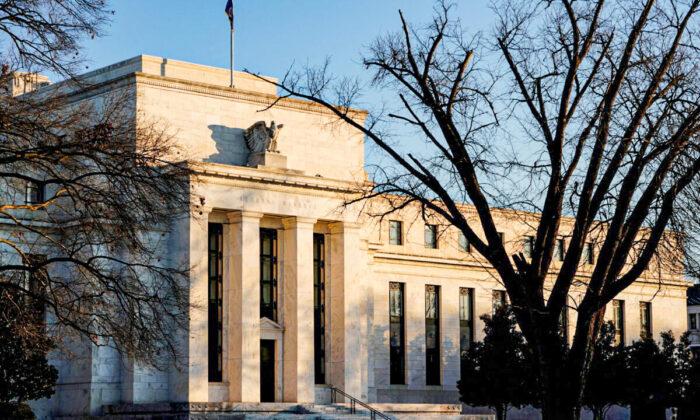Inflationists are cheering the rise in lending growth as it appears to be a sign of reflation and economic growth as we head into the new year. With the Fed rapidly tapering its balance sheet, a rise in lending growth is providing validation that inflation is here to stay and that perhaps the economy is on the edge of a long-anticipated secular rise in inflation.
Despite the increase in lending growth and the new money that’s created from it, it still isn’t enough to sustain inflation.
It makes sense that an increase in bank lending, which in turn creates new money, should lead to higher inflation. However, history shows the relationship between the two is rather weak. High annualized rates of lending growth haven’t contributed to higher rates of inflation since the mid-1980s, indicating other deflationary forces are offsetting the creation of new money from the commercial banking system.
Up until the middle of the Great Financial Crisis, loans and leases at all commercial banks and deposits at all commercial banks rose in tandem. After the Great Financial Crisis, deposit growth accelerated at a much faster rate than lending growth. Rising deposits are deflationary as money idles in bank accounts rather than being put to productive use in the real economy.
In the decade leading up to the Great Financial Crisis, the loan-to-deposit ratio was no less than 0.90, indicating there was slightly more money on deposit than there was in outstanding loan balances. Since the Great Financial Crisis, the ratio has steadily fallen and is now just below 0.60 as banks seem unable to lend fast enough against this ever-increasing level of deposits.
From the commercial banks’ perspective, they still need to pay interest on these idle deposits. In an ideal scenario, the commercial banks would lend against these deposits and use the interest from the loans to pay the depositors. Without enough lending growth, the commercial banks are forced to buy U.S. Treasury securities to pay the interest on those excess deposits.
When new cash enters the commercial banking system, the commercial banks know approximately how long the cash will stay on deposit depending on if it’s a consumer or commercial deposit. Since the commercial banking system is reserve-based, the commercial banks convert those new cash deposits into bank reserves by purchasing U.S. Treasury securities with customer-deposited money.
A bank reserve is nothing more than a deposit that’s backed by the U.S. government in the form of a U.S. Treasury security. The commercial bank uses the interest from the Treasury securities to pay interest on the deposits. When the amount of money on deposit exceeds the amount of money on loan, the commercial banks must buy Treasury securities to fill in the gap.
As commercial banks demand more Treasury securities to convert customer deposits into bank reserves, interest rates tend to fall. Since the mid-2000s, there’s nearly a 90 percent correlation between the commercial bank loan-to-deposit ratio and 10-year Treasury yields. As money on deposit continues to increase, Treasury yields continue to decrease as a byproduct of the creation of bank reserves.
With short-term interest rates at historically low levels and few alternatives for consumers to generate a higher return on their savings, commercial bank deposits are likely to continue rising. Unless there’s a large increase in lending demand to fuel a surge in lending growth, commercial banks will be forced to continue turning deposits into bank reserves. As banks demand more government debt to back bank deposits, interest rates will remain low and likely go lower.
While inflationists are cheering an increase in commercial bank lending as a sign of reflation, their view remains short-sighted to the bigger disinflationary picture created by a rapid increase in bank deposits. As long as deposits continue to grow at a faster rate than loans, interest rates will remain low. Based on the design of our financial system, banks will continue buying bonds that will keep interest rates low, regardless of how hot inflation might get.
Most inflationists believe interest rates must rise as inflation rises but, despite rising inflation, yields remain low. The reason yields have remained low and will continue to remain low has nothing to do with inflation but the fact that the commercial banks are buying bonds with customer deposits.





